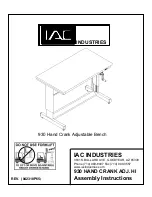
No. MIIXR0002EAC
1 Introduction
This document is a DICOM Conformance Statement for Toshiba's Digital Fluorography
Systems. It is intended to provide the reader with the knowledge of how to integrate this product
within DICOM compliant equipments. It details the DICOM Service Classes, Information
Objects, and Application Profiles which are supported by this product.
If the reader is unfamiliar with DICOM, it is recommended that they read the DICOM
Specification (referenced below) prior to reading this conformance statement. Also note that
this document is formatted according to the DICOM Specification, Part 2: Conformance.
1.1 References
•
ACR-NEMA Digital Imaging and Communications in Medicine, DICOM V3.0.
1.2 Definitions
•
Information Object Definition (IOD)
- An IOD is a data model which is an abstraction of
real-world information. This data model defines the nature and attributes relevant to the
class of real-world objects represented.
•
Service/Object Pair (SOP) Class
- A SOP Class is defined by the union of an Information
Object Definition and a set of DIMSE Services. A DICOM Application Entity may support
one or more SOP Classes. Each SOP Class is uniquely identified by a SOP Class UID.
•
SOP Instance
- A specific occurrence of a Information Object.
•
Transfer Syntax
- The Transfer Syntax is a set of encoding rules that allow DICOM
Application Entities to negotiate the encoding techniques (e.g. data element structure, byte
ordering, compression) they are able to support.
•
Unique Identifier
(UID)
- A Unique Identifier is a globally unique, ISO compliant,
ASCII-numeric string. It guarantees uniqueness across multiple countries, sites, vendors
and equipment.
- 1 -






































